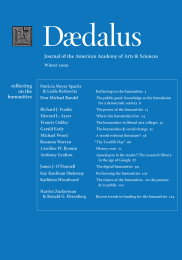Performing the humanities at the Ethiopian Millennium
The performing arts, sometimes regarded as separate from the humanities, in fact bring the humanities to life.1 Through performance, the written word travels from the mind’s eye to the lips and to the ear; painting and sculpture suddenly spring into motion; and music takes wing from the imagination or from a score to fill all available sonic space. A moment of performance, at its best, gathers together various domains of human expression, a sensory experience able at once to narrate history, enact social relationships, symbolize systems of belief, and generate feelings of fear, comfort, or joy. While the humanities are generally conceived as the disciplines spanning fields of knowledge such as literature or philosophy, they simultaneously provide the basis for much of human behavior and patterns of interaction expressed through the arts. Music and its performance, in particular, convey these multiple domains of knowledge as well as provide “audible entanglements,” shaping both individual imaginations and broader communities.2
Performance tells us less about procedures than it does about processes. Ideally, performance incorporates spectators and performers alike, reaching out from the present to extend both into the past and the future, reaffirming existing collectivities and creating new ones. Take, for instance, the September 8, 2007, performance in Washington, D.C., to mark the advent of the Ethiopian Millennium.3 More than five thousand D.C.-area Ethiopian immigrants4 turned out for the concert, which provided a bracketed moment for members of the Ethiopian diaspora community in D.C. to reaffirm their identities as Ethiopians, in solidarity with (but also in opposition to) others dispersed around the world. That Ethiopians in the homeland marked the passage of the millennium with a celebratory concert, too, provides fascinating data for comparative studies, discussed briefly in my conclusion. . . .
Endnotes
- 1The American Academy of Arts and Sciences’s Humanities Indicators Prototype expressly excludes the arts from the scope of the humanities. See Humanities Indicators Prototype, http://www.humanitiesindicators.org/statement.aspx: “Scope of the ‘Humanities’ for Purposes of the Humanities Indicators” (American Academy of Arts and Sciences, 2008). My essay engages and takes occasional issue with that exclusion. I acknowledge the Radcliffe Institute for Advanced Study, the John Simon Guggenheim Foundation, and the National Endowment for the Humanities for fellowships that supported a leave year during which this essay was written. I thank Ellen T. Harris, Steven Kaplan, and Daniel Mekonnen for helpful comments.
- 2 Jocelyne Guilbault, “Audible Entanglements: Nation and Diasporas in Trinidad’s Calypso Music Scene,” Small Axe (17) (2005): 40.
- 3The Ethiopian calendar, based on a Roman Julian model, runs approximately seven-and-a-half years behind the Gregorian calendar adopted in the West. Thus the Ethiopian millennial year began in early September 2007, both in Ethiopia and in its diaspora.
- 4Members of the second-largest community of late-twentieth-century African arrivals to the United States, Ethiopian refugees and emigrants began to leave their homeland in large numbers in 1974, following the overthrow of the Ethiopian monarchy and subsequent revolution. Nearly a million Ethiopians are estimated today to live in diaspora, with the majority settled in the United States. The Washington, D.C., metropolitan area is the unofficial center of Ethiopian life in North America. See Solomon Addis Getahun, The History of Ethiopian Immigrants and Refugees in America, 1900–2000: Patterns of Migration, Survival, and Adjustment (New York: LFB Scholarly Publishing LLC, 2007).
